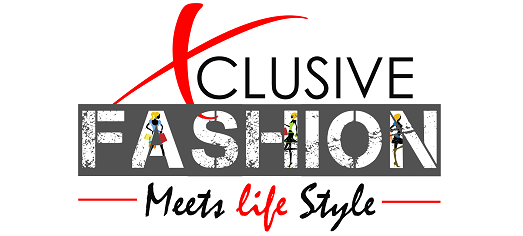Most Popular

Pay To Promote YouTube Video On YouTube With Profitable Ideas
Sharing is caring!
It’s possible to make a living on YouTube to pay to promote YouTube video. I have a YouTube channel with over 1,000,000 views, and just from YouTube ad money. I’ll acknowledge that I’ve only begun to scratch the surface; some content producers make more money each month than I will ever make in my whole life.
How do PewDiePie, Jeffree Star, and Dude Perfect, among other influential YouTubers, generate seven- and even eight-figure incomes each year while building wildly profitable digital real estate assets? In this article, I’ll discuss some of the most effective methods used by the top YouTubers to monetize their channels and demonstrate how you can do the same, even on a more modest scale to pay to promote YouTube video.
1. Create a blog to go along with YouTube
Building your brand on YouTube is a terrific way to gain subscribers, boost conversion rates, and boost sales.
Also, YouTube, the second-largest search engine, provides enormous potential to promote your brand to your target market and expand your audience elsewhere.
Where did I learn this? Because it’s one of the things I’ve done to expand the blog you’re reading right now as a marketer.
You can see from the screenshot above how many people visited my blog in the previous month. As you can see, 6,924 more visitors in a single month is not a little increase.
The most crucial thing to realize is that a blog will almost always generate more revenue than any popular YouTube channel since it gives you the opportunity to interact with your audience more deeply and personally, through emailing them, for example.
In addition, blogs can display display advertisements, offer a variety of AdSense alternatives to reduce your reliance on Google, and typically have greater click-through rates for affiliate links from well-known affiliate networks and other ad revenue sources.
Step 1: Create a blog
Starting a blog with the same branding you’ve already established is the first stage in this procedure. The important thing is to make sure your blog shares the same aesthetic as your YouTube channel. If you want something a little more user-friendly, you may either use WordPress, as I did, or a website builder.
Then, if you’re a do-it-yourselfer, you can either use graphic design software or employ a graphic designer. Although I advise using WordPress, you are free to use another site design programme of your choice.
If you want to start right now, just click here to enroll in my free IGNITION course. It will guide you step-by-step through the procedure.
Covering the ignition course
Step 2: Promote Your Blog on YouTube to Get More Visitors
The next thing to do after starting a blog is to upload existing content to your YouTube channel. Many methods exist for doing this;
- Mention blog postings in videos, and in the description, encourage viewers to visit them.
- Make evergreen content to include in the video descriptions.
The trick here is to lure them away from the platform and onto your blog so you can fully immerse them in your brand.
Unfortunately, YouTube is notoriously lousy at collecting user data. Even so, integrating it with a blog enables you to diversify touch points and forge closer bonds with your most ardent supporters.
What would you do if your YouTube channel was removed when you woke up tomorrow?
Aside from terror, all of your hard work will go overnight if you don’t have another channel through which you may communicate with your audience.
Step 3: Get email addresses from blog visitors
Getting visitors to subscribe to your email list—whether they are coming from YouTube or somewhere else—is the key to increasing your blog’s revenue.
The cause?
In general, email marketing is one of the finest ways to monetize your audience. According to studies, every dollar spent will yield a return of $36.
It is exceedingly challenging to obtain that ROI using any other method. Make use of your blog to provide something worthwhile in exchange for your visitors’ email addresses.
For instance, I obtain people’s email addresses whenever they register for one of my free classes. I then send them a course that is LOADED with value, and I stay in touch with them to promote other things.
But, it is not required to be a course. You can try making a downloadable PDF that your audience will find useful as a checklist, outline, ebook, Audible hosted audiobook, guide, or anything else. When you’ve decided what you’re going to provide, use my list of email marketing programmes to choose the platform that works best for you.
Step 4: Grow and Offer Suggestions Using Email
After you have an email address, you can use it to expand your audience and offer suggestions to boost your earnings.
Don’t be scared to send an email for each blog post or YouTube video you make if you want to build your audience.
Instead, if you already have affiliate products that you can sell and earn commissions on, send those over by email and watch the money roll in.
Yet, it should be noted that great power also comes with great responsibility and a need for more YouTube premium content.
They’re likely to unsubscribe if you abuse the trust that your audience has placed in you by sending them emails on a regular basis. If you’re concerned about it, you can think about emailing your audience once a week to inform them of all the latest events.
This will guarantee people receive the information they require and prevent information overload.
2. Establish an anonymous YouTube channel
Making what I refer to as a “faceless” YouTube channel is one of the ways that my wife and I have learned to earn money online from YouTube views.
When individuals envision themselves as full-fledged video creators, they picture themselves in front of a camera, recording and editing videos with editing software and video managers until their eyes start to bleed.
Yet, the concept behind this is comparable to what I do with websites, and the economic model is pretty intriguing.
You build a channel full of videos centred on a single subject or theme, and when the algorithm ranks or recommends those videos, you profit passively from YouTube ad views.
The nicest aspect is that you don’t have to fret about videoing or submitting videos on your own. Instead, when creating intriguing and high-quality content for your channel, you adhere to copyright rules or combine content from others that you are legally permitted to use. Several of these resources, including videos and pictures, are available on Shutter stock.
Remember that YouTube is the second-largest search engine and that it keeps expanding with more self-made YouTube content producers each year. Thus, we joined this trend in 2020 since we believe it is about to take off.
I wish I could say that I came up with this on my own, but I can’t. From Matt Par, I learned about this entire company strategy. You may sign up for his webinar on this idea by clicking here.
What you should know is:
- Using this strategy, Matt earns more than $30,000 each month (he provides evidence of his income in the course he sells.
- Matt is a young man who appears to be a friend of your child or children. But don’t let his age fool you. His strategies are effective, and his programme is sound.
- I think Matt uses a little too much pressure in his sales techniques, but I’m sure he does it for one very clear reason: it works. His training is amazing and packed with value if you can get beyond the sales techniques.
- By clicking here, you may sign up for a webinar to help you better comprehend everything.
With absolute surety, I can report that my wife and I started experimenting with two channels and numerous videos, and the results are looking good. We have seen the result in YouTube Algorithm. And the result was good.
Here is the first channel we made utilising this technique.
As my wife is proficient in Portuguese, I don’t even mind sharing this channel with you, even though the revenue per 1,000 views (EPM) is low due to the market (which primarily serves people in Brazil, not the USA).
The videos on this channel, Diva Makeup, are primarily makeup compilations. Below is a screenshot of the YouTube views and broad stats.
We chose to test his strategies on this channel as our first attempt, and because they were successful for us, we made the decision to target the more lucrative American market. Due to the EPM being too low, we no longer add new videos to this channel.
A former YouTube account she had was converted for our second channel.
Since I don’t want more competitors, I can’t tell you the name of this channel. Yet it’s clear from this that the techniques are effective.
As you begin outsourcing the entire process, this paradigm becomes attractive. Even while it seems difficult, it’s not really that tough. You must: in order to make a successful video.
- To discover a topic, conduct keyword research using VidIQ or Tube Buddy.
- a search to locate videos or pictures
- Making content editable
- a voiceover and a script, or you can use Murf.ai as your voiceover (Full Murf Review Here)
- Someone to upload the video and make it SEO-friendly
In conclusion, this is a legitimate business model that, in my opinion, isn’t particularly saturated because it hasn’t yet gained widespread acceptance and is just as demanding as creating videos from scratch.
Anyone who thinks this would be a good idea should see his webinar to fully grasp it.


































